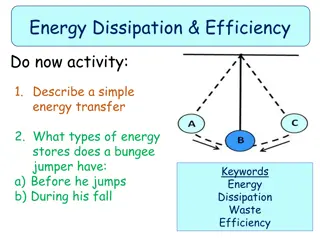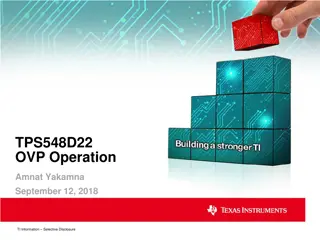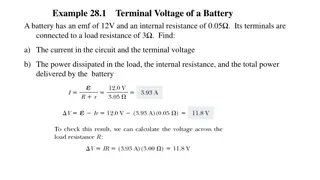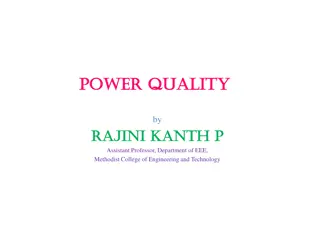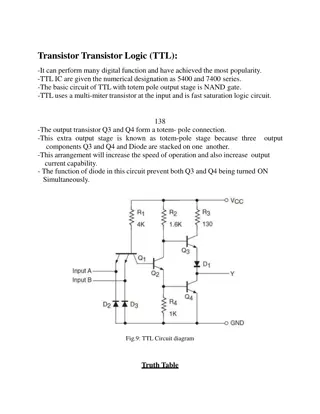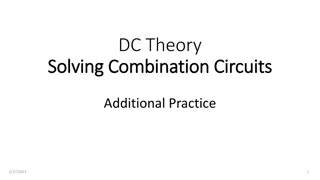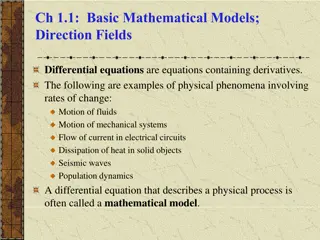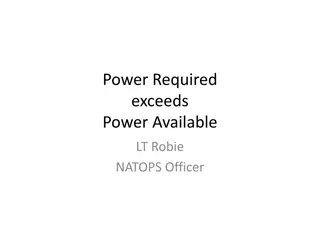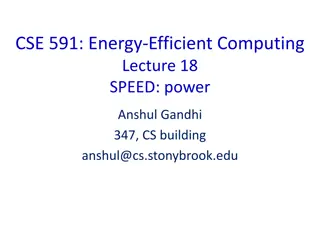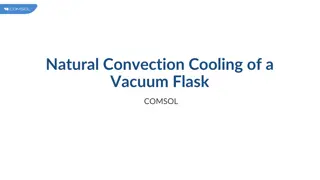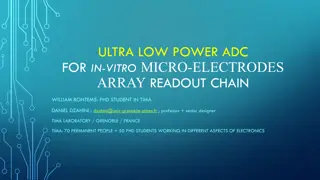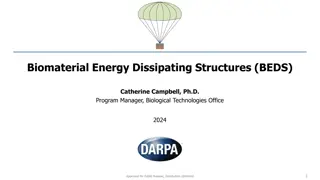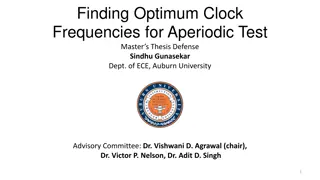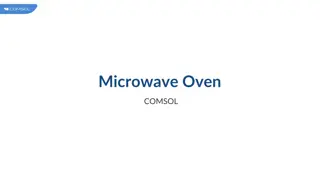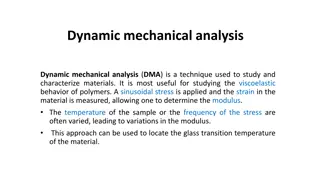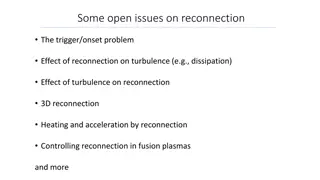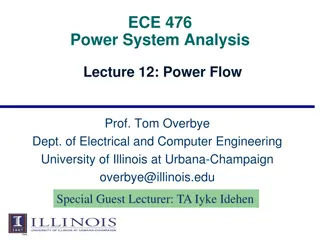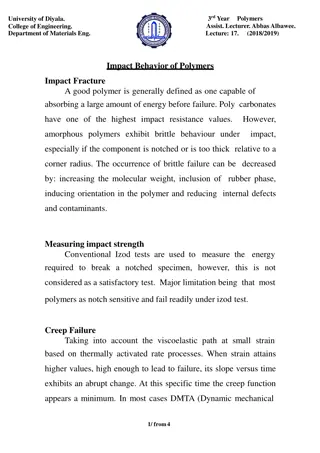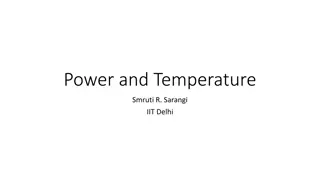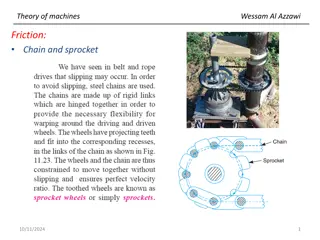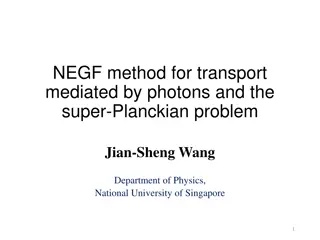Cisco Systems Fault Managed Power Portfolio Overview
Cisco Systems offers an industry-leading Fault Managed Power (FMP) patent portfolio comprising 24 active assets across seven INPADOC families. The portfolio includes patents supporting fault-managed power systems, PoE deployments, DC power distribution, DC-DC conversion, and HVDC connectors. The FMP
4 views • 4 slides
High Stored Energy Emergency Discharge Systems Overview
This presentation discusses the high stored energy emergency discharge systems for klystron modulators used in RFQ/DTL and MBeta applications. It covers the storage locations of energy in various capacitor banks, the components of the system, and safety measures. The content includes detailed diagra
7 views • 10 slides
Essential Factors Affecting Computers' Maintenance
Computers are susceptible to damage from various factors such as heat, dust, water, corrosive liquids, and powerline problems. To ensure optimal performance and longevity, it is crucial to monitor and address these elements to prevent potential harm. Proper maintenance practices like controlling hea
5 views • 14 slides
Improving Multi-Link Power Management Efficiency in IEEE 802.11 Networks
The document discusses challenges with per-link power mode changes in multi-link scenarios in IEEE 802.11 networks, proposing a solution for more efficient power management. It addresses issues such as latency and inefficiencies in signaling for power mode changes, introducing scheduled multi-link p
6 views • 9 slides
Energy and Heat Transfer Problems Explained
Solve various physics problems related to heat transfer, specific heat, latent heat, and efficiency in heating devices. Calculate the amount of heat needed to raise the temperature of different substances, melt solids, and evaporate water. Explore concepts like specific heat, latent heat of fusion,
2 views • 25 slides
Understanding Power Transfer and Impedance Matching in Circuits
Exploring the concept of maximizing power transfer between a source and load through impedance matching. Learn about complex conjugates, real and magnitude of complex numbers, average power in circuits, and the importance of minimizing reflected power. Discover how incident, reflected, and delivered
3 views • 33 slides
Understanding Energy Dissipation and Efficiency in Systems
Explore the principles of energy dissipation, waste, and efficiency in various systems, such as a machine's energy transfer, bungee jumping, and useful vs. wasted energy in examples like a swinging pendulum. Learn to identify energy losses, useful energy transfers, and complete calculations for effi
0 views • 24 slides
Overview of Farm Power Sources and Utilization in Agriculture
Farm power sources in agriculture include human, animal, mechanical, and renewable energy. Human power is costly but versatile, while animal power is traditional and provides manure. Mechanical power from tractors and engines is efficient. India's farm power sources reflect a mix of traditional and
0 views • 12 slides
Understanding Friction Clutches in Power Transmission
Friction clutches play a vital role in transmitting power in machines, especially those requiring frequent starting and stopping. They use friction to smoothly start driven shafts without excessive slipping. Different types of friction clutches, like disc or plate clutches, cone clutches, and centri
0 views • 26 slides
Successful Channel Modification Techniques and Benefits
Channel modification projects aim to accelerate the recovery of stable, sustainable channel forms in dynamic balance with sediment, large wood, and flow regimes. Successful modifications lead to improved habitat quality, stability, and diversity, benefiting sediment transport and riparian zones. Phy
0 views • 15 slides
Advanced Operation of TPS548D22 with OVP Functionality
This detailed content presents the operational intricacies of TPS548D22 with OVP function, including setup specifications, fault-triggered actions, shutdown mechanisms, threshold behaviors, and minimum on-time considerations. The process involves orchestrated switching between FETs to regulate VOUT
0 views • 7 slides
Electrical Circuit Analysis Examples and Solutions
Explore various examples of electrical circuit analysis involving batteries, resistors, and parallel connections. Learn how to calculate current, voltage, power dissipation, and equivalent resistance in different circuit configurations. Detailed solutions provided for better understanding.
0 views • 12 slides
Understanding Power Quality and Its Impact on Electrical Systems
Power quality refers to the characteristics of electrical power that drives sensitive equipment. It involves voltage and current deviations from ideal waveforms, impacting the efficiency and reliability of electrical systems. Various types of power quality phenomena exist, such as voltage variations
1 views • 16 slides
Understanding Transistor-Transistor Logic (TTL) Circuits
Transistor-Transistor Logic (TTL) is a popular digital circuit technology known for its speed and reliability. This technology utilizes totem pole output stages for efficient performance. TTL logic gates have varying characteristics like power dissipation and speed, making them suitable for differen
0 views • 5 slides
Efficient Class B Amplifier Operation and Power Calculation
Class B amplifiers offer greater efficiency compared to single transistor Class A operation. This article covers the push-pull operation of Class B transistors, input DC power calculations, connecting push-pull amplifiers to loads, output AC power measurement, efficiency calculation, and power dissi
0 views • 28 slides
Solving Combination Circuits: Practice and Problem-Solving
Explore solving combination circuits through practice exercises and class problem-solving techniques involving equivalent resistance determination, PIER chart application, Kirchhoff's laws, current and voltage analysis, and power dissipation calculations. Enhance your understanding of circuit analys
3 views • 26 slides
Distribution and Adaptation of Warm-Blooded Animals on Earth
The distribution of warm-blooded animals shows regularities based on their size and environmental adaptations. From the Fennec Fox in North Africa to the Emperor Penguin in Antarctica, different species have evolved to thrive in diverse habitats based on their morphological features. Bergmann's rule
1 views • 16 slides
Understanding Differential Equations in Physical Phenomena
Differential equations play a crucial role in modeling physical phenomena involving rates of change like fluid motion, mechanical systems, and heat dissipation. This content explores examples of differential equations in motion and provides insights on sketching direction fields using tools like Map
0 views • 11 slides
Understanding Chlorophyll Fluorescence in Plant Physiology
Chlorophyll fluorescence is a powerful tool developed in the 1990s for studying plant physiology and stress. It provides insights into photosynthetic processes at different levels, from subcellular to canopy. By measuring chlorophyll fluorescence, researchers can assess the efficiency of photosynthe
0 views • 16 slides
Understanding the Properties of Materials for Clothing Selection
Different types of garments are required for varying weather conditions and activities. Fashion designers must comprehend material properties to choose the ideal fabric for maintaining garment functionality. Fabrics like wool and fleece serve as thermal insulators, keeping individuals warm in cold w
0 views • 17 slides
Helicopter Power Management Guidelines
Understanding the factors that can lead to power required exceeding power available in a helicopter is crucial for safe operation. Indications such as uncommanded descent, rotor droop, loss of tail rotor authority, and right yaw signal potential issues to watch out for. Knowing when such occurrences
0 views • 11 slides
Exploring Power Efficiency in Computing Systems
In this lecture series on energy-efficient computing, various concepts related to dynamic frequency scaling, power capping, power shifting, power modeling, and power measurement are discussed. The impact of power on server speed is explored, alongside strategies for improving performance within powe
0 views • 17 slides
Modeling Natural Convection Cooling of a Vacuum Flask in COMSOL
This example demonstrates the modeling of natural convection cooling in a vacuum flask holding hot coffee using COMSOL. It compares two approaches to describe thermal dissipation, focusing on calculating the flask's cooling power over time. Results include temperature analysis, heat transfer coeffic
0 views • 11 slides
Comparison of Electricity Power Systems Between CEPC and FCCee
The evaluation and comparison of electricity power systems between the CEPC and FCCee accelerators reveal the power breakdowns, RF power consumption, magnet power supply, and overall power usage. Differences in power consumption for various components such as RF, magnets, and vacuum systems are high
0 views • 19 slides
Ultra Low Power ADC for In-Vitro Micro-Electrodes Array
Collaborative research project at TIMA Laboratory in France focusing on developing ultra-low power Analog to Digital Converters (ADC) for in-vitro micro-electrode arrays, aiming to enhance communication with the brain using electronics sensors. The project addresses key limitations such as power dis
0 views • 6 slides
DARPA Program for Developing Biomaterial Energy Dissipating Structures
This DARPA program aims to create novel biomaterial structures, BEDS, to enhance airdrop operations by improving energy dissipation and reducing form factor. The program addresses the limitations of current crushable honeycomb pads used for cushioning vital deliveries during airdrops. DARPA outlines
0 views • 5 slides
Finding Optimum Clock Frequencies for Aperiodic Test
Finding the best clock frequencies for aperiodic testing in integrated circuits is crucial for reducing test time and costs. This study by Sindhu Gunasekar explores the use of aperiodic clock testing to optimize test cycles and minimize power dissipation, ultimately improving testing efficiency.
0 views • 29 slides
Modeling Microwave Oven Heating Process
This model simulates the heating process in a microwave oven, analyzing the distribution of heat through a stationary electromagnetic analysis and transient heat transfer simulation. It showcases the redistribution of heat in food as it absorbs microwave energy, with detailed evaluations of power ab
0 views • 10 slides
Exploring Dynamic Mechanical Analysis (DMA) for Material Characterization
Dynamic Mechanical Analysis (DMA) is a valuable technique for studying viscoelastic behavior in materials, particularly polymers. By applying sinusoidal stress and measuring strain, DMA helps determine modulus and locate the glass transition temperature. The method involves varying temperature or st
0 views • 8 slides
Recent Developments in Plasma Reconnection Experiments
Explore key open issues in plasma reconnection such as trigger/onset problems, turbulence effects, 3D reconnection, and the impact on heating and acceleration. Discover new experimental developments like the Big Red Ball at Wisconsin for field-free plasma confinement and access to different reconnec
0 views • 8 slides
Overview of Unified Power Flow Controller (UPFC) in Power Systems
A Unified Power Flow Controller (UPFC) is a combination of a Static Synchronous Compensator (STATCOM) and a Static Synchronous Series Compensator (SSSC) interconnected via a common DC link. UPFC allows bidirectional flow of real power and provides concurrent real and reactive series line compensatio
0 views • 20 slides
Understanding Leadership and Power Dynamics
Power and leadership are interconnected concepts, with power being the measure of a person's ability to influence others. Leaders have power in various situations, but it does not necessarily mean having power over people. Effective leaders balance their use of power with knowledge and trust, knowin
0 views • 9 slides
Understanding Atmospheric Energetics and Dynamics
Explore the intricate relationship between atmospheric energetics and baroclinic instability, illustrated through images and figures depicting the energy cycle, conversion rates, and generation/dissipation rates. Learn about potential and kinetic energy variations, as well as the observed global tre
0 views • 10 slides
Understanding Mechanical Quality Factor of Cryogenic Silicon
This presentation explores the Mechanical Quality Factor of Cryogenic Silicon, detailing its significance in improving LIGO detectors by minimizing thermal elastic noise. The Fluctuation-Dissipation Theorem is discussed, showing how it relates noise spectrum to linear system responses. Methods for m
0 views • 18 slides
Power System Analysis: Lecture on Power Flow
Lecture 12 on Power Flow Analysis in Power Systems covers the use of power balance equations when analyzing complex power consumption and generation. It explains the derivation of real power balance equations for iterative solutions in power flow analysis. The lecture highlights the need for iterati
0 views • 30 slides
Advanced Concepts in Detector Design for High-Energy Physics Experiments
Advanced concepts in detector design for high-energy physics experiments are explored in this detailed document. It covers various aspects such as parameters, conceptual designs, radiation lengths of typical structures, thermal performance requirements, and cooling options. The content delves into s
0 views • 7 slides
Understanding Impact Behavior and Fracture Energy of Polymers
Polymers with high impact resistance are sought after for their ability to absorb energy before failure. Factors affecting impact behavior, such as molecular weight and orientation, are discussed. Methods for measuring impact strength and creep failure are explored, along with the advantages of blen
0 views • 5 slides
Understanding Power Consumption and Temperature in Electronic Circuits
Explore the significance of power consumption in electronic circuits, focusing on reasons for high power, high temperature, and low reliability. Learn about sources of power consumption, types of power dissipation, dynamic power analysis, and the relationship between energy and power in circuits.
0 views • 30 slides
Friction in Theory of Machines by Wessam Al Azzawi
Explore the role of friction in theory of machines through Wessam Al Azzawi's detailed discussion on chain and sprocket mechanisms, as well as the function and importance of brakes in controlling motion and speed. Dive into the intricate relationship between artificial frictional resistance and mach
0 views • 17 slides
Advanced Methods in Transport Phenomena and Quantum Field Theory
Explore cutting-edge research in transport processes mediated by photons, tight-binding models for electron behavior, electron-field interactions, NEGF definitions, fluctuation-dissipation theorem, Dyson equations, and Keldysh equations in the context of quantum field theory and super-Planckian near
0 views • 18 slides






